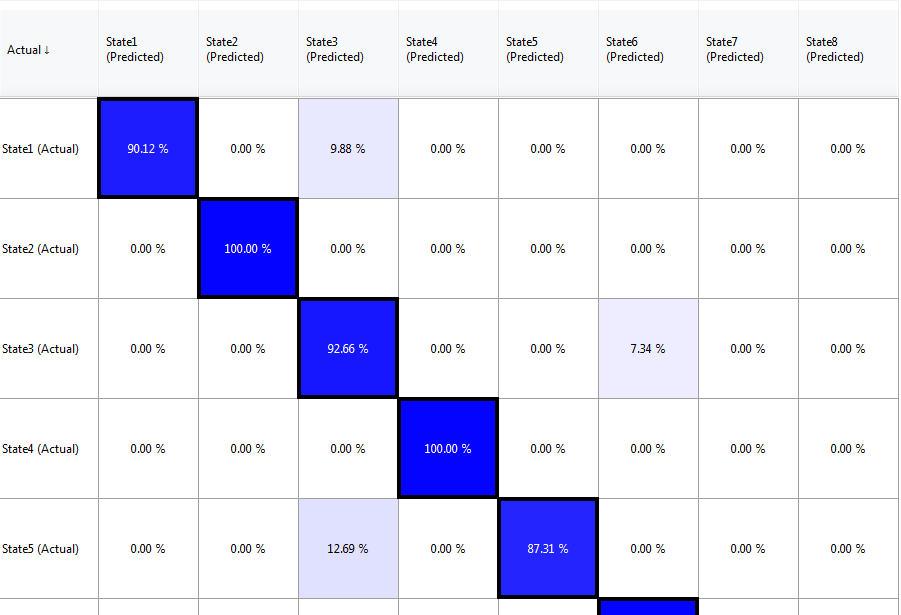A confusion matrix displays the number of correct or incorrect predictions made by a classifier such as a Bayesian network.
Diagonal elements of the matrix show the number of correct predictions, while off-diagonal elements show incorrect predictions.
An example is shown below.

|
|
|---|
|
When classifiers predict an output which is true or false, we get the following terms:
|